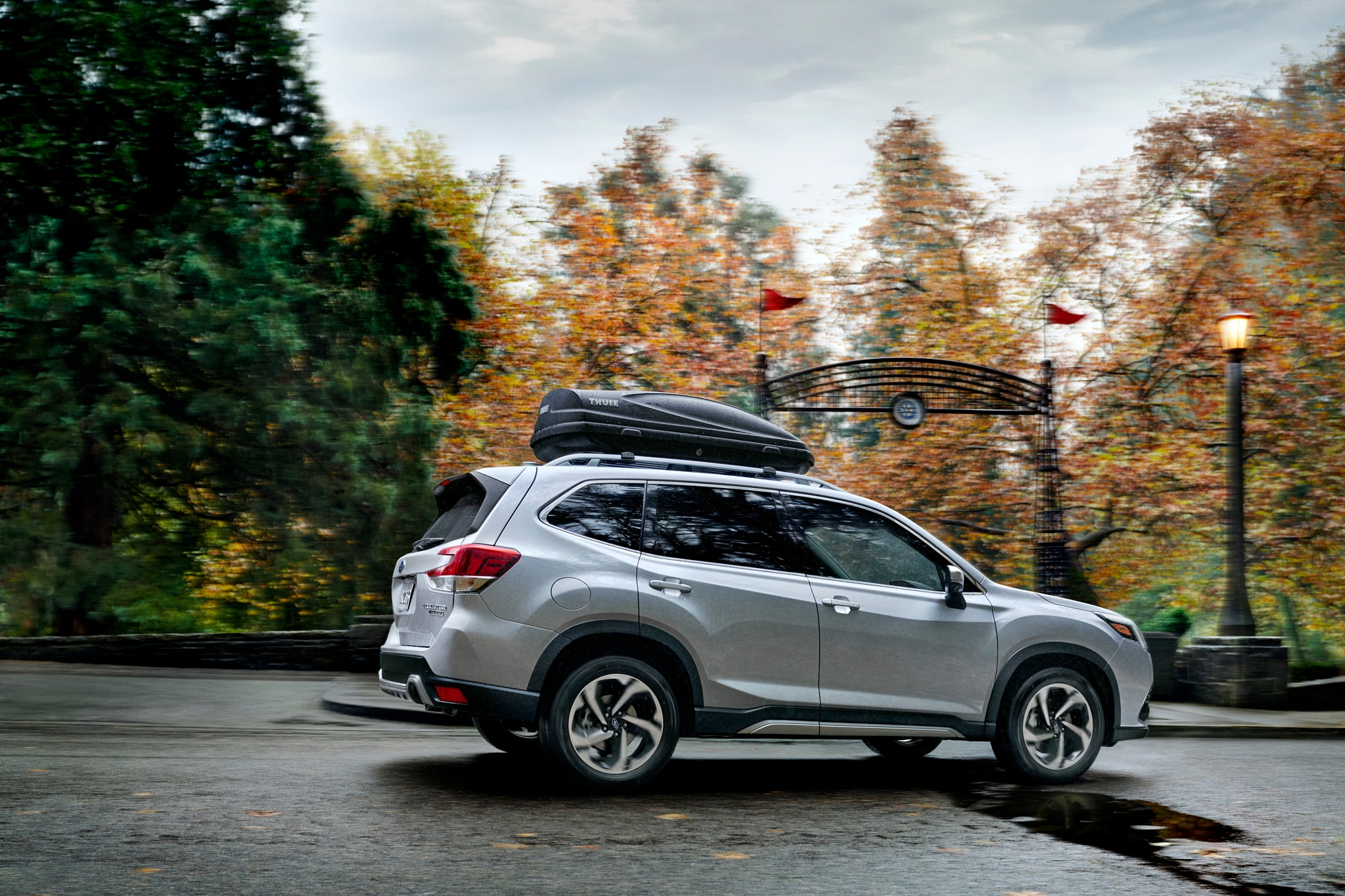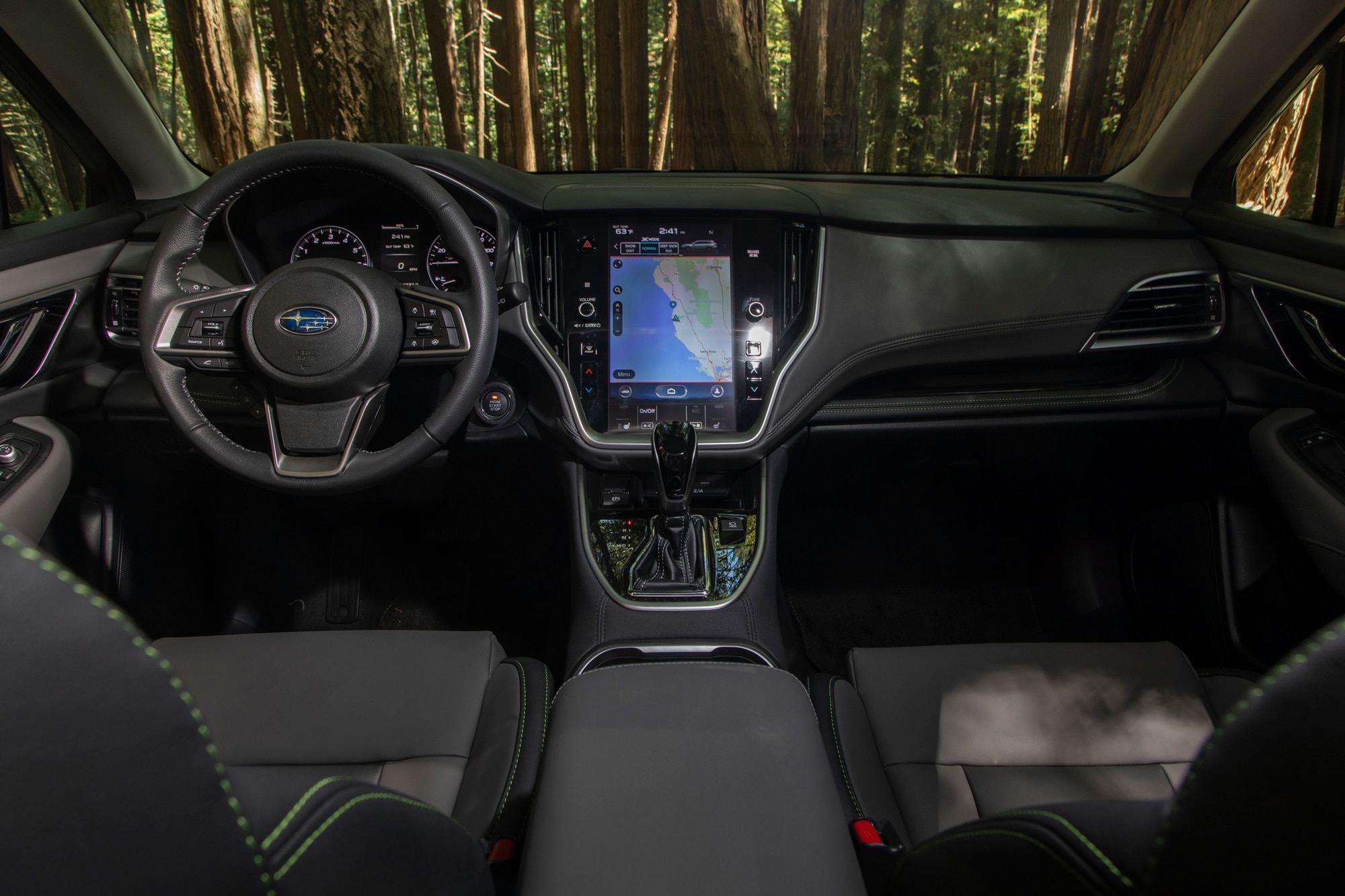Compared: 2022 Subaru Forester vs. 2022 Subaru Outback
Subaru’s outdoorsy crossover models offer standard all-wheel drive and lots of safety tech.
 Subaru
Subaru
Article QuickTakes:
Subaru’s popular Forester and Outback models overlap in several key areas, but they target different audiences. The Forester is more affordable and smaller in every direction, while the Outback is positioned higher in the Subaru lineup and offers a more powerful turbocharged engine.
Both are more off-road-focused than their main rivals, including the Honda CR-V and the Toyota RAV4, and selecting the Wilderness trim increases their usual 8.7 inch ground clearance to 9.2 inches in the Forester and 9.5 inches in the Outback. The Outback costs more, but it comes standard with a longer list of equipment and a bigger trunk.
Subaru Forester vs. Subaru Outback: Price
Subaru offers the 2022 Forester in six trim levels, priced from around $27,000 to $37,000. Every member of the range is powered by a 182 hp 2.5L flat-four engine paired with a continuously variable transmission (CVT). Subaru’s permanent all-wheel drive (AWD) system comes standard regardless of the variant.
Outback buyers have eight trim levels to choose from, priced between $28,070 and $41,070. While the bottom four models are powered by the same 2.5L flat-four engine found in the Forester, the top four trims use a 260 hp turbocharged 2.4L flat-four that lets the Outback tow up to 3,500 lbs. Both engines are paired with a CVT and permanent AWD.
 Subaru | Forester
Subaru | Forester
Subaru Forester vs. Subaru Outback: Features
Highlights from the base Forester’s list of standard features include Subaru’s EyeSight suite of electronic driving aids (including adaptive cruise control, a lane departure warning system, and a pre-collision braking system), the Starlink infotainment system on a 6.5 inch touchscreen, 17 inch steel wheels, steering-responsive LED headlights, cloth upholstery, manually adjustable front seats, and a four-speaker sound system. Stepping up to the base Outback unlocks a 7 inch touchscreen, 17 inch alloy wheels, LED fog lights, and raised roof rails, among other features.
Several features available on upmarket Outback trims are not offered on the Forester. These include power-folding door mirrors, ventilated front seats, and an 11.6 inch infotainment display.
One of the main differences between the Forester and the Outback is size: The Forester stretches 182.7 inches long while the Outback’s footprint checks in at 191.3 inches. Thanks in part to its taller cabin, the base Forester offers more passenger volume (111.6 cu.-ft.) than the Outback (109 cu.-ft.) but it has a smaller trunk (28.9 cu.-ft. versus 32.5 cu.-ft.). Note that these figures only apply to the base trims without an available sunroof. The top five Forester variants offer 107.6 cu.-ft. of passenger volume and 26.9 cu.-ft. of trunk space, while passenger volume drops to 106.5 cu.-ft. in Outback models equipped with the power tilt/sliding moonroof.
 Subaru | Outback
Subaru | Outback
Subaru Forester vs. Subaru Outback: Fuel Economy
The 2.5L powered versions of the Forester and the Outback are both rated at 29 combined mpg, according to the EPA. The Outback is fitted with a bigger fuel tank than the Forester (18.5 gallons versus 16.6) so it offers 536 miles of driving range, compared with 481 miles.
Ordering the Outback with the 2.4L turbocharged flat-four reduces fuel economy to 26 combined mpg, while the Forester Wilderness and the Outback Wilderness are rated at 26 and 24 combined mpg, respectively.



